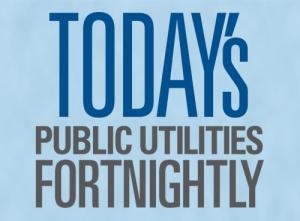Excerpted from “Sam Insull, Bill Nye, and the Urge to Innovate,” in the November 2019 special issue of Public Utilities Fortnightly on innovation:

“Today, the eleventh of November, is Samuel Insull’s Birthday. We’re in Insull’s debt for his many breakthroughs for the utilities industry, in the late nineteenth century and the early twentieth. Not the least of which is, literally, the innovation of utility regulation.
From Insull’s memoirs:
I was president of the National Electric Light Association [predecessor to the Edison Electric Institute] in 1897 and 1898. At the annual convention of the Association, held in Chicago on June 7th, 1898, I advocated public control and private operation, or in other words, the regulation of public utilities. I was criticized by a great many people in the public utility business at the time, as I was of the first men occupying a prominent position in the industry to take the position that, as the business was a natural monopoly, it must of necessity be regulated by some form of governmental authority.’
... Imagine if Insull’s decade-long battle for utility regulation, which was won in Wisconsin first and then in other states commencing in 1907, had flagged. The investor-owned utilities like Insull’s had struggled to raise sufficient capital to fully build out the grid – beyond the most prosperous communities – amid competition, the huge sums needed, and the vagaries of customer demand. And whenever an investor-owned utility emerged from competition, becoming a monopoly, the public outcry was enormous.
This wasn’t a problem for the municipally-owned utilities of the early twentieth century. Though they too were extremely capital-constrained. And then the Panic of 1907 drove many of them into a severe crisis.
Suppose that Insull’s innovation of utility regulation hadn’t taken hold. Then the utilities industry wouldn’t have gained access to the massive amounts of capital that was ultimately needed to electrify most of the nation’s population by the nineteen thirties. Regulation made that happen. (Though, the expansion of utility service into the countryside would require the federal government’s intervention via the Rural Electrification Act of 1936.)
Insull’s career spanned the utilities industry’s first growth spurt of innovation. From when Thomas Edison hired Insull as his personal secretary in January 1881 to the nineteen thirties, the period was a frenzied race of creativity and invention. However the decades that followed are better characterized as consolidation, incremental advancement and execution of the dreams of Thomas Edison, Samuel Insull, George Westinghouse, Nikola Tesla, Charles Coffin, Owen Young, etc.
But now let’s turn to the utilities industry’s second growth spurt of innovation underway in our day.


